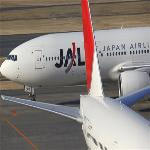
Travel and tourism, vital elements in the Asia-Pacific region's economy, have been staging a recovery since late 2009, with growth strongest within the region. But, while travel experts are upbeat, they say it could take a year before the industry fully recovers from the global economic slowdown.
The Asia-Pacific travel industry is on the rise after two years of hard times caused by soaring fuel prices and the global economic slump.
The Pacific Asia Travel Association (PATA) says the recovery had gathered momentum, with international visitor arrivals in the region increasing three percent in November compared with a year earlier.
PATA spokesman John Koldowski, says the travel industry may have to wait until 2011 for a full recovery. But he says airlines, hotels and tourist attractions expect a successful Lunar New Year holiday.
"It's going to be a boom; even now if you try to get a flight in or out of somewhere you have to be very, very cautious - very, very flexible," Koldowski explained. "The capacity at that point in time is limiting. As you know, we've had air capacity reductions for the last 18 months."
The Lunar New Year begins February 14, and is traditionally a popular time for travel in Asia. Markets that are showing strong gains include Taiwan, South Korea, Hong Kong, and Macau. Arrivals to China, however, are still down from 2008 when Beijing hosted the Olympic Games.
Arrivals to Nepal, Sri Lanka and the Maldives were also higher, but visitor numbers to India remained flat. Southeast Asia led the region's recovery with a boost in arrivals of 15 percent. The International Air Transport Association recently reported that the Asia-Pacific region has eclipsed North America as the largest aviation market.
In 2009, 647 million people flew in the Asia-Pacific, compared with North America's 638 million.
Brian Sinclair Thompson, Thailand manager for Swiss International, is upbeat over the region's outlook.
"Cautious optimism is once again the buzz word and I think the region - Asia Pacific - is showing the way in terms of the IATA statistics," he said. "It's set to take over from North America in absolute terms of movement and I think that's probably a good sign as well that intra-Asia, the demand is definitely coming back."
Sinclair Thompson expects the major carriers to rebuild capacity while low-cost airlines, which continued to grow during the downturn, are still expanding.
Lutzi Matzig, chief operating officer of travel operator Asian Trails, says Thailand began recovering in late 2009, but he says political stability in Thailand is vital to keep the recovery going.
Anti-government protesters in late 2008 occupied Bangkok's international airport for a week, costing the travel industry hundreds of millions of dollars.
"Thailand, we are up 3.7 percent, so the trend is positive, but no mega increase. But at least it's going in the right direction. December is generally better than a year ago, but at least the trend starts to go up. This is good," said Matzig.
The region's travel industry, which in some countries makes up more than five percent of the economy, will be banking on a continued recovery of the global economy this year to build on the recent improvement.
upbeat: positive and enthusiastic; making you feel that the future will be good 乐观的;快乐的;积极向上的
mega: very large or impressive 巨大的;极佳的
'Health tourism' increasingly popular in Asia
Japan opens door wider to tourists
(来源:VOA 编辑:陈丹妮)
